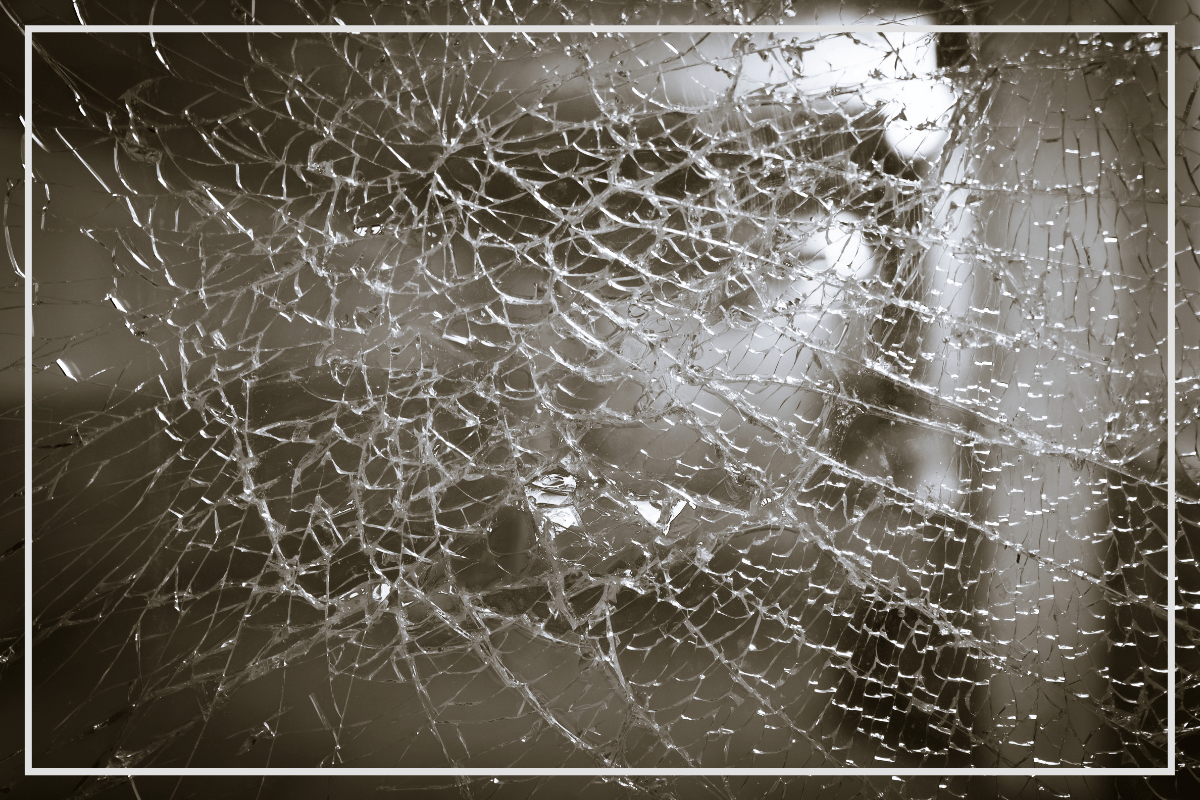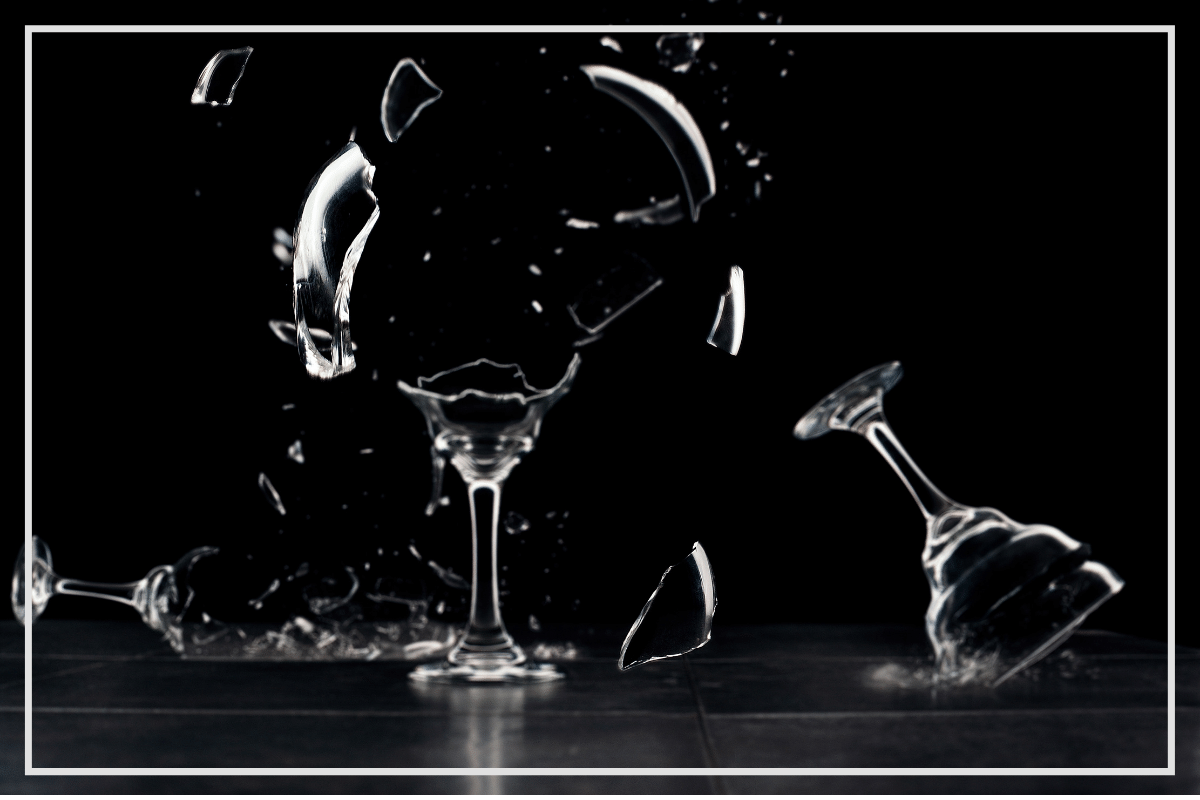- How Does Sound Break Glass
- At What Frequency Does Glass Break
- How To Break Glass With Sound Waves
3.1 Use A Real Crystal Glass
3.2 Use Thin And Long Glas
3.3 Get The Glass To Resonate
3.4 Use Spectrum Analyzer
3.5 Use A Straw To Visualize When The Glass Is Resonating - What Loudspeaker To Use
- How To Break Glass With Your Voice - Is It Even Possible?
- Detect The Necessary Sound Level With DecibelPro.App
At one point or another, all of us sound enthusiasts have wondered how to break glass with sound. The truth is it’s hard not to. It’s a tempting experiment especially when you are into trying science myths. Like we are!
So, what is the answer to “How does sound break glass?” and “What frequency breaks glass?".
Well, we’re about to find out not only at what frequency does glass breaks but the science behind it, too.
How Does Sound Break Glass?
Before we get into the details of what frequency breaks the glass, let’s take a look at exactly how sound can break the glass. Because since we’re talking about science, it can’t be magic. It needs to have a scientific explanation.
So, how do you break glass with sound? What do you have to do?
First of all, breaking glass with sound is possible, but it’s not that easy. Especially not with your voice. Although the movies make it look easy, you probably shouldn’t get your hopes up that you could sing loud enough to break a glass. Not even if you happen to be an opera singer and can easily hit high notes.
Breaking glass with sound actually requires meeting a lot of special conditions. Therefore, getting things just right likely requires a lot of practice.
Second, to understand how does sound breaks glass, we need to understand what sound is and how it works.
Sound is energy and it travels through sound waves. Frequency is measured in hertz. It represents how many sound waves pass through a certain point over a certain period. 1 hertz represents 1 wave/ second.
When it travels, sound energy (sound waves) passes through certain matters. In doing so, it causes the particles of these matters to vibrate. The frequency at which these matters vibrate depends on their composition. Each of them will have a specific frequency.
Thus, for sound to break glass, it first has to match the resonant frequency of the said glass.
That’s why if you’re trying to break glass with sound, it’s important to consider which glass you are using. For example, you can imagine that a thick water glass is harder to break than a champagne glass.
Most experiments are done using wine glasses. They are thin enough and it helps if they’ve also been used. Abrasions on the surface of the glass will make it easier to break. No matter how small they are.
Then, there’s also a condition relating to the intensity of the sound breaking the glass. Specifically, for a sound to break glass it needs to have a high intensity. Experiments of how sound breaks glass have shown that a minimum intensity of 105 dB is required.
Considering that normal speech is at about 60 dB and a lawnmower is at 90 dB, it’s difficult to achieve the required intensity with a human voice. So, you will most likely need an amplifier to reach the required intensity level.
At What Frequency Does Glass Break?
Movies lead us to believe that all it takes for glass to break is an opera singer singing loud enough. Or, high enough.
Sure, it would be fun to be able to break glass with your voice that easily. In reality, things are a little more complicated. And simply hitting a high pitch is not enough. Many other factors affect the frequency at which glass breaks.
As mentioned, the frequency at which glass breaks depends on the glass. There is no set frequency at which glass breaks.
Each glass has a certain structure. Its shape, size, thickness, and composition will determine its fundamental frequency. To make glass break with sound, the key is getting the sound to match that frequency.
The volume of the sound is also essential because how loud a sound is determines how it displaces air molecules. As sound travels, it passes from one molecule to another. Finally, when it reaches the glass, it needs to push air at the glass hard enough for it to start resonating.
For sound to break glass, the forcing frequency (the sounds) needs to match the natural frequency of the glass. Then, the amplitude of that sound needs to be able to cause sufficient stress to the glass to break it.

How to Break Glass with Sound Waves
To break glass with sound waves, you need to hit the right frequency and the right amplitude. The sound’s intensity needs to exceed the strength of the glass to cause it to break.
If you want to try to break glass with sound waves, you should first be aware of the risks. Then, make arrangements to avoid them.
Safety first! So, put on safety goggles to shield yourself from broken glass. You should also consider your hearing. Use ear protection devices like earmuffs or earplugs.
Next, find a space where shattering glass everywhere won’t be a problem. Ideally, one that you can easily clean up. If you’re attempting this experiment in a carpeted room, use a drop cloth to catch the shattered glass.
The space should also have good acoustics and as little echo as possible.
You will need a few devices for a complete ‘How to break glass with sound’ experiment. You will need:
- a stereo amplifier with output going into a speaker
- a speaker placed as near to the glass as possible
- a frequency generator
- a frequency synthesizer
You can also use a microphone connected to an oscilloscope to monitor the response of the glass to the sound.
Because you’ll be using equipment, make sure your space is fitted with a power outlet.
Now, let’s see what else you’ll need to know to break glass with sound waves:
Use a Real Crystal Glass
If you can get your hands on one, try using a glass made of real crystal.
Because of the fine material they are made of, crystal glasses are more likely to break. This means that the sound you are using to break the glass doesn’t have to be that intense. You may even be able to break it without using an amplifier.
An older real crystal glass with small abrasions or tiny cracks in it will also make the success of the experiment easier for you. Weak spots in the glass’ structure will make it more likely to crack under pressure. It may also make it easier to find what frequency breaks the glass.
Additionally, consider using an empty glass rather than one containing liquid. Air carries sound better because it is less dense than the liquid.
Use Thin and Long Glass
If you can’t find a real crystal glass, a wine glass will do. Red or white wine glass, it doesn’t matter. A generic wine glass is tall and thin enough to make a good candidate for this experiment.
The key is for the glass to have a strong resonance. Use your finger to ping it. The easier and longer it rings, the better the glass is.
Get the Glass to Resonate
Striking the glass will make it resonate. This is the best way to tell whether the glass is easy to break or not.
Flick it with your finger to get it to resonate. The easier and longer it rings, the less damping it has and the better it is for this experiment. Damping stops objects from vibrating so you should avoid it.
Try different glasses until you find the right one. Also, avoid embossed or complex design glasses.
Use a Spectrum Analyzer
The ringing sound of the glass when you flick it is its resonant frequency. You’ll need to match it to make the glass break.
To find the frequency of the glass and match it, use a spectrum analyzer. It can read the frequency of the glass and help you tune your frequency generator to a similar pitch.
Use A Straw to Visualize When the Glass Is Resonating
To make things even easier, use this simple trick. All you need is a kitchen utensil – a drinking straw.
Place the drinking straw in the wine glass. When the glass starts vibrating, the straw will start moving. Using a straw is a great way to visualize when the glass is resonating.
The louder the resonance, the more the straw will jump.
What Loudspeaker to Use
As mentioned, you’ll probably need loudspeakers for this experiment.
Conventional loudspeakers won’t do the trick. You will need a loudspeaker that can distort the glass. That means causing opposite sides of the glass to move in opposite directions.
Ideally, you’ll have a 2’’ compression driver. It’s a type of loudspeaker with a very small diaphragm that can direct the sound onto one side of the glass.
How to Break Glass With Your Voice - Is It Even Possible?
The answer is that you can break glass with your voice. However, very few circumstances have been recorded.
If you’re planning this experiment without equipment, you’ll need to first place the glass on a sturdy platform. Place it high enough so you can sing while standing. This will help your diaphragm and get the best tone. You’ll also need to place the glass close to the mouth.
Next, flick the glass to identify its resonant frequency and keep the frequency in your mind. Hum it to yourself as you’re gathering the energy to sing. Remember you’ll need to match it to make the glass break. You’ll also need to be able to sing loud enough.
Detect the Necessary Sound Level with DecibelPro.App
Decibel Pro is a high-performing sound-level meter app that you can use for breaking glass with sound.
All you need is a smartphone. Simply download the app to your iPhone or Ipad, open it, and it will give you instant readings of sound levels. It can help you identify the necessary sound level. Plus, it also comes with a spectrum analyzer that you can use to find what frequency breaks the glass.
To learn more about the Decibel app, click here.



